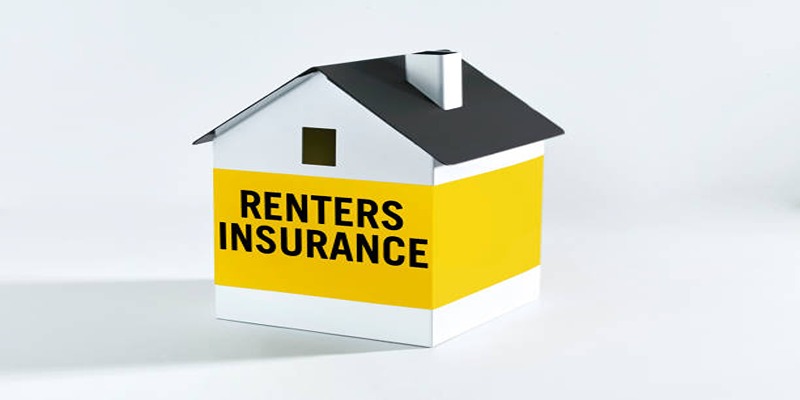Renting a home comes with financial responsibilities, and renters insurance is a key one. While it protects your belongings, many don’t realize how location impacts the cost of coverage. Why does this happen, and how can understanding these differences save you money? This guide breaks down how your state affects rates, factors influencing pricing, and tips to secure the best deal for your renters insurance.
What Is Renters Insurance and Why Does It Matter?

Renters insurance is a type of policy designed to protect renters against potential losses. It typically includes three key coverage areas:
- Personal Property Coverage: Protects your belongings, such as furniture, electronics, and clothing, from risks like theft, fire, or water damage.
- Liability Protection: Pays for legal and medical expenses if you’re responsible for injury to someone or damage to their property.
While renters insurance is relatively affordable, prices vary widely across the United States, making it crucial to understand how location plays a role in determining your premiums.
Understanding Geographic Differences in Renters Insurance Rates
Several important factors affect how much insurers charge based on your state. Here's an overview of some key considerations:
1. Weather and Natural Disaster Risks
States prone to extreme weather events like hurricanes, tornadoes, earthquakes, or floods often see higher insurance rates. For example:
- Florida has some of the highest premiums because of its exposure to hurricanes and flooding risks.
- California residents may pay more due to frequent wildfires and seismic activity.
- States in “Tornado Alley,” such as Oklahoma and Kansas, are also on the pricier side because of the high frequency of wind-related damage.
On the other hand, states with more stable climates and fewer natural disaster risks, like Maine or Idaho, tend to have lower average premiums.
2. Crime Rates in Your Area
Property crime rates, including rates of burglary, vandalism, and theft, directly impact renters insurance costs. Insurers consider crime statistics by zip code when calculating premiums.
- Renters living in cities like Detroit or Memphis, which experience relatively high rates of property crime, generally pay higher premiums.
- Conversely, areas with lower crime rates, such as New Hampshire or parts of the Midwest, usually offer more budget-friendly rates.
3. State Insurance Regulations
Different states have varying laws and regulations governing insurance policies. For instance:
- States that set stricter requirements or minimum coverage levels might lead to slightly higher premiums for renters.
- Meanwhile, deregulated or competitive states might keep rates more affordable as insurance providers vie for customers.
4. Population Density and Urbanization
Urban areas with high population density, like New York and Chicago, often come with higher renters insurance prices due to increased risks associated with theft, accidents, and property damage.
However, renters in rural or suburban parts of the country may benefit from lower rates due to fewer risk factors.
5. Construction Costs and Local Repair Prices
If the cost of repairs or replacements is higher in your state, your renters insurance premiums may reflect this. States with higher labor and materials costs, such as Hawaii or Alaska, often charge more for coverage.
Average Renters Insurance Costs Across the US
Still unsure where your state stands? Here’s a snapshot of 2023’s average annual renters insurance premiums across select states, based on a 30-year-old individual with $30,000 in personal property coverage and $100,000 in liability coverage:
- Florida: $225
- Texas: $210
- California: $200
- New York: $165
- Ohio: $140
- Maine: $115
These numbers can give you a ballpark idea of what to expect, but keep in mind that individual rates still depend on your specific circumstances.
How to Get the Best Renters Insurance Rates
Regardless of where you live, there are steps you can take to lower your renters insurance costs. Consider these tips to maximize savings:
1. Shop Around and Compare Quotes
Prices can vary significantly across providers—even in the same state. Take time to compare at least three different insurers to find a policy offering great value without cutting coverage.
2. Bundle Policies
You can save money by bundling your renters insurance with another policy, like auto insurance, as many insurance companies offer discounts for doing so.
3. Increase Your Deductible
A deductible is the amount you pay out-of-pocket before insurance covers the rest. Opting for a higher deductible lowers your premiums, but ensure you can afford it when filing a claim.
4. Secure Your Home
Enhance your safety with deadbolts, smoke detectors, and home security systems. These features not only protect you but can also qualify you for discounts from many providers, making your home both secure and cost-efficient.
5. Ask About Discounts
Don’t be afraid to check for additional discounts offered by insurers. Some common ones include discounts for being claims-free, having good credit, or being a member of professional associations.
6. Regularly Review and Update Your Coverage
Life changes and your renters insurance should keep up. Take time to review your policy each year to make sure it fits your needs, avoids gaps, and saves you from extra costs. Protect yourself with coverage that works for you.
Why Renters Insurance Is Worth It

While costs may vary depending on where you live, renters insurance remains one of the most affordable ways to protect yourself from potentially significant financial losses. The average monthly premium in the U.S. is just $15! Plus, the peace of mind that comes with knowing you’re protected is invaluable.
Conclusion
Don’t settle for guessing what coverage you need or overpaying for premiums. Whether you're in sunny Florida or the rolling plains of Kansas, renting should be hassle-free. Start by comparing renters insurance rates and getting tailored quotes today. It’s time to protect your peace of mind without breaking the bank.












